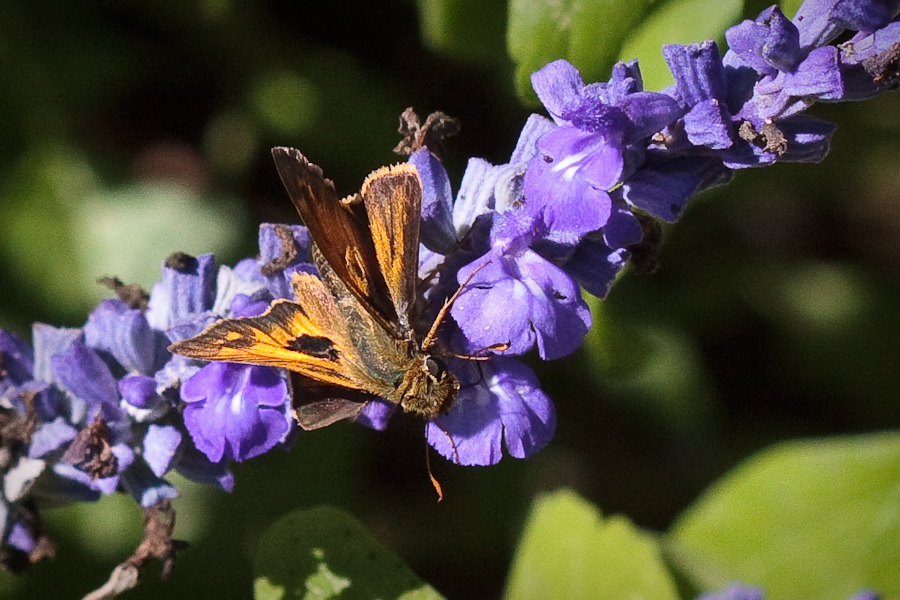Moth Monday Cheats
First of all it’s Tuesday, and second of all this is a Sachem Skipper, which, depending on whom you talk to, isn’t a moth at all, but rather a butterfly (or maybe not–read on). However the real moths are getting rather thin on the ground around here as winter approaches, and unless I take a trip to warmer climes sometime soon, Moth Monday may have to go on hiatus until Spring.

Sachem Skipper, Atalopedes campestris, Hodges #4049
Prospect Park, 2009-09-20
However the real taxonomic story is a little more complicated. Perhaps noticing all publicity the American Museum of Natural History got by demoting Pluto from planetary status, the Los Angeles Museum of Natural History put up signs in its live butterfly and moth exhibit telling visitors that there is no scientific difference between butterflies and moths.
Traditionally butterflies and moths were distinguished because butterflies had clubbed antennae and moths didn’t. However taxonomically the butterflies seem to have evolved from the moths (more specifically the geometers) so they’re really just a subgroup of moths. Of course, by that logic a bird is just a funny kind of reptile (or birds and reptiles are just funny kinds of dinosaurs). DNA studies over the last couple of decades have been upending pretty much everything we ever thought we knew about species, and that seems likely to continue for several decades more, probably leading to a major rethinking of just what a species is anyway, and how many branches the tree of life has. The convenient “King Philip Couldn’t Order Five Good Sandwiches” mnemonic we learned in high school is just way too simple to describe reality.
And, oh yes, the skippers. These have traditionally been considered butterflies, but superficially they resemble bright, day-flying moths. Also, their antennae have neither clubs nor feathers but rather hooks. Does that make them their own group? Taxonomically, skippers are placed in the superfamily Hesperioidea, while all other North American butterflies are placed in Papilionoidea. There are also a few dozen species of Hedylidae in Central America and points south that used to be considered geometer moths, but have more recently been changed to butterflies.
One taxon up is the order Lepidoptera (scale-winged insects) which includes butterflies, moths, Hedylidae, and skippers. There’s no one grouping that includes both butterflies and skippers. Evolutionarily, I’m not sure what, if anything, we know about when or where skippers evolved. Did they evolve from non-skipper butterflies or vice versa? Or did skippers and butterflies each evolve separately from the moths? Are the Hedylidae another offshoot of the moths or a missing link between the moths and butterflies? Whatever we do think we know is likely to change in the next couple of decades anyway.

October 27th, 2009 at 2:52 PM
Birds are a specific kind of dinosaur, and dinosaurs are a specific kind of reptile.